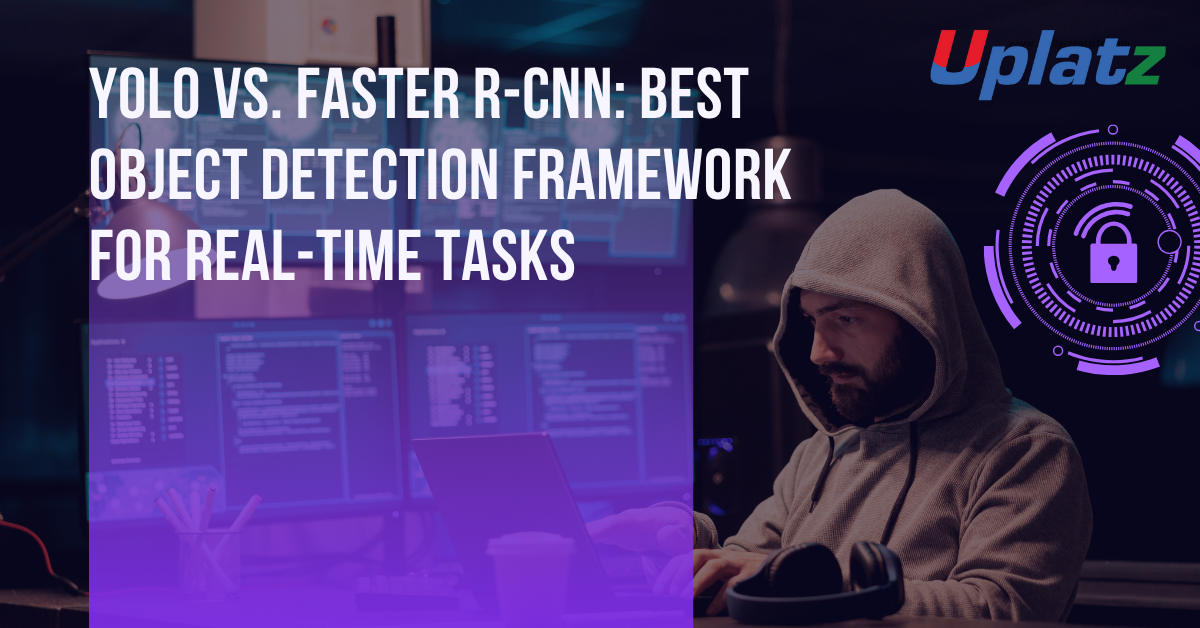YOLO vs. Faster R-CNN: Best Object Detection Framework for Real-Time Tasks
Real-time object detection demands a careful balance between speed and accuracy. YOLO (You Only Look Once) and Faster R-CNN (Region-based Convolutional Neural Network) represent two leading paradigms: single-stage, one-pass detectors optimized for speed versus two-stage detectors that emphasize accuracy through region proposals. This report compares their architectures, performance trade-offs, use cases, and best practices to guide selection for low-latency applications.

- Architectural Overview
1.1 YOLO: Single-Stage, Grid-Based Detection
YOLO frames object detection as a single regression problem. A convolutional neural network divides the input image into an S×S grid, predicting bounding boxes and class probabilities directly in one pass. This end-to-end design eliminates separate proposal stages, minimizing pipeline complexity and enabling high frame rates.
1.2 Faster R-CNN: Two-Stage Proposal-Based Detector
Faster R-CNN employs a Region Proposal Network (RPN) to generate candidate object regions, followed by a classification and bounding-box regression stage. Shared convolutional features feed both modules, improving proposal efficiency. This two-stage workflow achieves high localization precision but incurs additional computation per region .
- Speed vs. Accuracy Trade-Off
| Framework | Inference Speed | Typical Accuracy (mAP COCO) | Key Strength |
| YOLOv7 | ~155 FPS (v7 small) | ~37% @ IoU 0.50 | Ultra-fast, real-time video |
| YOLOv8m | ~545 FPS (TensorRT) | ~50% @ IoU 0.50:0.95 | Balanced speed and modern features |
| Faster R-CNN | ~5–20 FPS (ResNet50) | ~42% @ IoU 0.50:0.95 | High precision on complex scenes |
YOLO variants achieve hundreds of frames per second on modern GPUs, prioritizing throughput for video streaming and robotics. Faster R-CNN typically runs below 30 FPS on a single GPU, with speeds around 5–20 FPS depending on backbone and input resolution.
- Performance Characteristics
- YOLO Advantages
- Real-time throughput: Processes entire images in a single network pass, achieving up to 155 FPS on small models.
- Simple deployment: Single-stage architecture requires no external proposal algorithms.
- Low latency: Minimal per-image overhead benefits live video and edge devices.
- Faster R-CNN Advantages
- High accuracy: Two-stage region proposals yield superior localization and class separation, boosting mAP on benchmarks.
- Flexibility: Supports varied backbones (ResNet, Inception) and fine-tuning for domain-specific tasks.
- Robustness on small objects: RPN candidates improve detection of small or densely packed objects.
- Use Cases and Recommendations
4.1 When to Choose YOLO
- Live video analytics (surveillance, sports coverage) requiring >30 FPS.
- Autonomous drones and robotics with strict latency constraints.
- Edge deployments on resource-limited hardware where model simplicity aids real-time inference.
4.2 When to Choose Faster R-CNN
- Applications demanding high detection precision, such as medical imaging or quality inspection.
- Scenarios with small object detection or cluttered scenes benefiting from proposal refinement.
- Research and development contexts where flexibility in model architecture and feature extractors is paramount.
- Hybrid and Optimization Strategies
- Model Scaling: Use YOLO’s model family (n, s, m, l, x) to trade off speed and accuracy; for mid-range tasks, YOLOv8 m offers ~50% mAP at >500 FPS in optimized runtimes.
- Acceleration Tools: Deploy TensorRT, OpenVINO, or ONNX Runtime to boost inference speed for both frameworks.
- Selective Inference: Combine YOLO for initial detection with Faster R-CNN for high-confidence regions to balance throughput and precision.
- Conclusion
YOLO and Faster R-CNN each excel under different real-time detection constraints. YOLO’s single-pass inference delivers unmatched frame rates for latency-sensitive applications, while Faster R-CNN’s two-stage architecture provides superior accuracy where precision is critical. Selecting the best framework hinges on specific performance requirements, object scales, and hardware capabilities. By leveraging model scaling, runtime optimizations, and hybrid approaches, practitioners can tailor solutions that meet both speed and accuracy objectives for real-time object detection.
